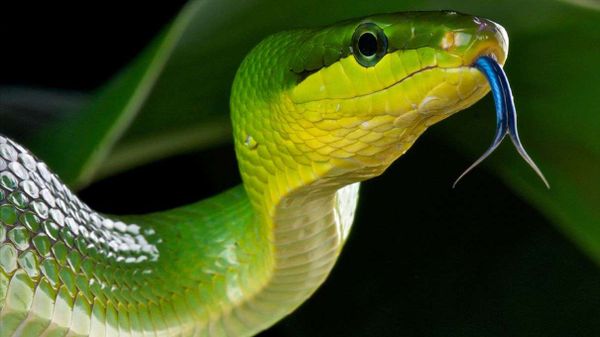
Snakes and lizards are both card-carrying members of the order Squamata. But while lizards skitter and dash on fully formed legs, snakes opt for a legless slither. Just why and how these animals took such different evolutionary paths is a matter of scientific debate. However, one thing's for sure — some snakes still carry genetic coding that allows them to develop legs and feet.
So why don't these snakes sprout limbs and start strutting through the bushes? The genetic machinations behind this process are essentially switched to the "off" position, thanks to multiple genetic mutations that occurred more than 100 million years ago.
Advertisement
Those mutations affected a particular gene – the Sonic hedgehog gene (SHH) – which is responsible for the development of limbs. And before you ask, yes, it's actually the gene's official name, so-called because of its spiky appearance. The Sonic hedgehog gene is not only vital for limbs, it also provides guides for organs and their placement within growing animals. In lizards, the SHH is active and results in legs and feet; it is deactivated in snakes.
A study published in Nature Communications in 2016 showed how changes in the reptile genome ultimately resulted in obvious transformations in the creatures' phenotype, or physical traits that come from expressions of certain genes. In short, genetic mutations caused some lizards to do away with their appendages, becoming snakes, while still retaining the echoes of those leggy genes in their DNA.
In order to pinpoint changes in genetic sequences, the researchers compared genomes from snakes with those of other reptiles and vertebrates that do have complete limbs. They relied particularly on the genome of the tegu lizard, for which science has a completely sequenced genome.
Lizards happened to have DNA regulatory sequencers (called enhancers) that can "flip" certain genes on and off during a creature's development. The SHH needs those enhancers for limbs to fully develop, which is how lizards wind up with four legs. But in snakes, this enhancer was removed from DNA sequences during evolution, and it's now virtually – but not completely – eliminated even from primitive snakes.
In some snakes, traces of the enhancer are still there, along with another gene, called HOXD, which is responsible for guiding the development of feet. Some python embryos even develop partial leg bones and footplates, but these features disintegrate long before the gestating creature is born.
Still, there are leftover signs that not all snakes are ready to be done with the idea of sprinting along wearing tiny Nike shoes. Peer closely at the underside of these snakes and you'll see little nubs on their bellies, vestigial remnants of legs that could've been.
What's it all mean? That with just a few genetic mutations, some types of primitive snakes might be able to develop limbs. They'd essentially be activating features that are already tucked away in their DNA, just waiting for the right variables to trigger their development.
Advertisement


